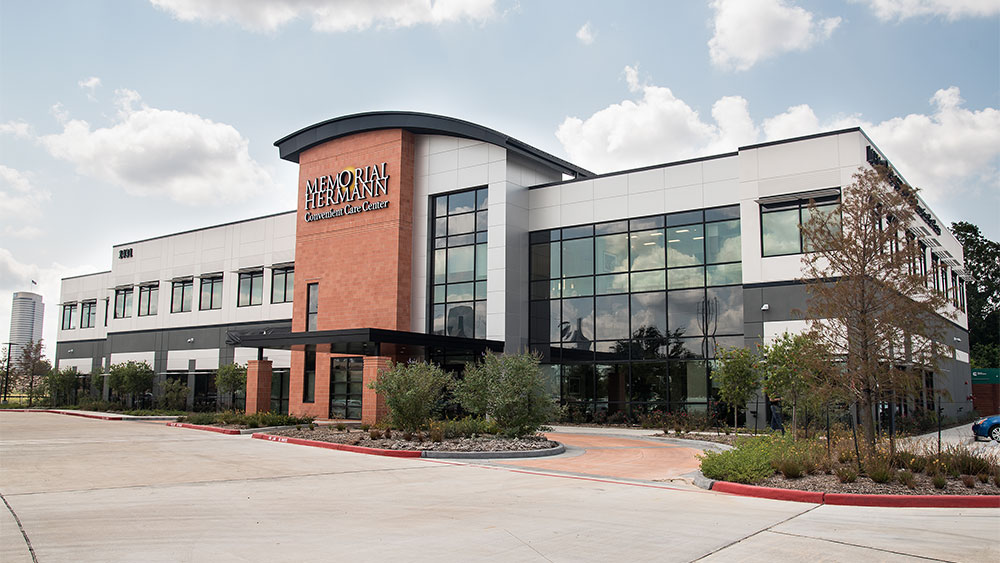Physical therapy can be beneficial in the treatment of scoliosis. The Schroth-certified physical therapists at Memorial Hermann aim to reduce the progression of spinal curvature, decrease pain and improve posture.
Our specialized treatment consists of utilizing a combination of techniques, including Schroth method for postural re-education, manual therapy for improved joint and soft tissue mobility, and core stabilization to maintain posture during daily activities. In addition, education will be provided to the patient and family on the plan of care, and managing daily functions while living with scoliosis.
What is the Schroth Method?
The Schroth method, developed by Katharina Schroth in the 1800s, is customized physical therapy to treat scoliosis in children, adolescents and young adults. Since then, the Schroth method has evolved to include exercises to elongate the spine, breathing into the concavity of the spine for improved symmetry and 3-D stabilization of the spine. Various positions may be utilized with assistance of wall bars, belts and/or wedges to help accomplish spinal elongation. It is a highly effective nonsurgical option for scoliosis treatment.
How is the Schroth Method different from other types of physical therapy?
The Schroth method is only used to treat idiopathic scoliosis. This therapy is effective in children, adolescents and young adults; but it is not intended for older adults. Schroth method and scoliosis- specific exercises, combined with donning a brace if needed, is a conservative treatment approach to reduce progression of the curvature and assist in returning the spine to a more natural position. It is customized for each patient based on the specific curvature of their spine, utilizing a 3-D approach by working on the spine from multiple angles (de-rotating the spine). Therapists aim to create stable postural correction and auto-elongation of the spine through a series of exercises combined with expansion breathing into the concavity side.
Goals of Schroth Method Physical Therapy
- Reduce progression of spinal curvature
- Assist in de-rotating the spine
- Decrease Cobb angle (the measurement of the curvature in degrees)
- Decrease pain
- Stabilize spine and improve strength
- Improve posture and body awareness
- Improve self-image
- Improve breathing and breathing into concavity side
Who can benefit from Schroth Method physical therapy?
Children, adolescents, or young adults with idiopathic scoliosis with curves greater than 15 degrees may benefit from Schroth therapy. Most patients are referred to Schroth method physical therapy by their pediatric orthopedic physician after being diagnosed with scoliosis. The therapy may help to prevent the need for surgery; however, it can also help with pre-surgical and post-surgical care if curve progresses to requiring fusion.
What to Expect
Schroth method treatment begins with an extensive evaluation. This is not a one-size-fits-all program, and patients are examined to determine best treatment option for their specific curve. A customized plan is created to address the patient’s specific needs. Treatment also includes education for the family, so parents can be actively involved in their child’s progress.
During the First Visit
The first appointment is dedicated to collecting information from the patient and family. Together, with the patient and family, the therapist will create a comprehensive treatment plan that fits into the family’s schedule and set goals for making progress.
Patients come to the clinic in comfortable clothes that allow easy access to the spine. Bathing suits or sports bras are recommended. The therapist will perform a postural assessment in multiple views, evaluate the curvature, assess joint mobility, and strength. A hard copy of imaging for enhanced assessment of the curvature may be beneficial. If the patient uses a brace as part of treatment, the therapist will review the importance of wearing the brace for the prescribed number of hours each day.
In-Clinic Sessions
Patients can expect each session to last 45 minutes to 1 hour, usually once or twice each week. Sessions will consist of a combination of different techniques, including manual therapy or stretches, motor-control activities to improve body and postural awareness, 3-D stabilization and breathing exercises, and guided activities to maintain proper alignment.
At Home
Practicing skills at home is important for success. On average, we recommend committing to 20 minutes of practice per day, for 5 or 6 days each week. However, this may vary based on individual treatment plans. Once discharged from therapy, it is beneficial to continue exercises to maintain optimal benefits and posture.
Ready to improve your Scoliosis?
If you are interested in a non-surgical treatment for idiopathic scoliosis, Schroth Method physical therapy may be right for you. The Schroth-certified physical therapists at Memorial Hermann Sports Medicine & Rehabilitation can help create a personalized treatment plan just for you. Request an initial evaluation with one of our physical therapists by filling out the form below or by calling (713) 521-0020 or (888) 301-8477.
















